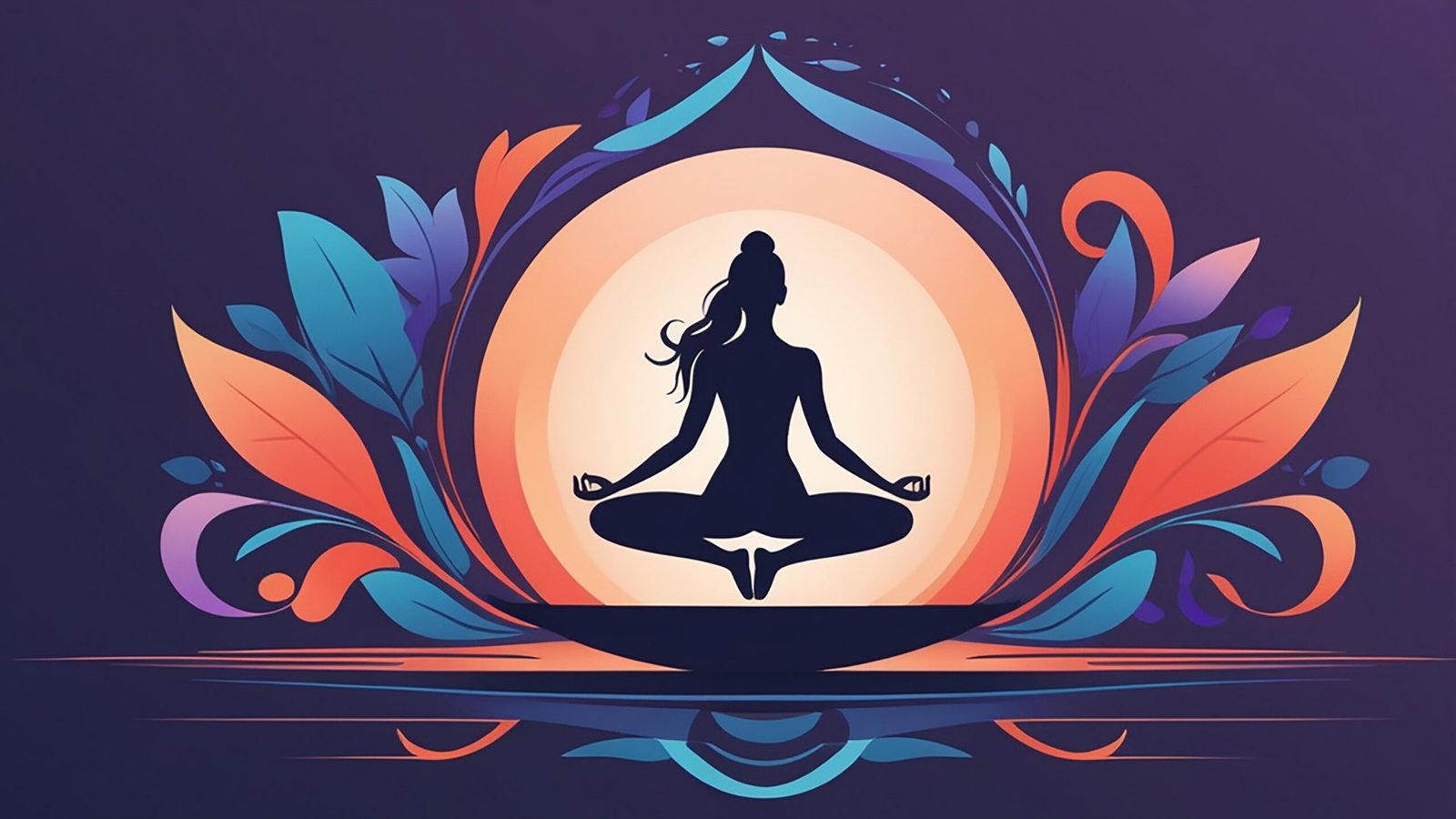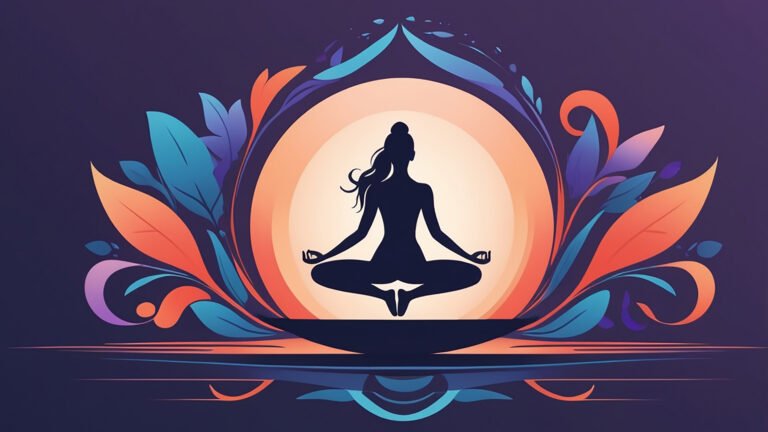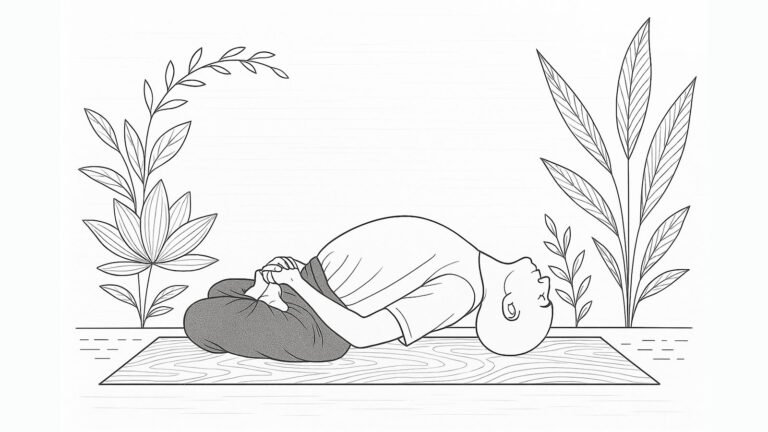— Introduction :
Gol Padmasana, literally meaning “Round Lotus Pose,” is a rare and deeply symbolic yogic posture that begins from Supta Padmasana, ascends through Vilom Padmasana, and completes as Pindasana in Sarvangasana—a tightly folded, spherical inversion of the body in Lotus.
This posture reflects the yogic principle of total withdrawal of energy into the self. “Gol” represents the bindu—the cosmic point of stillness and origin. The body, tightly folded and lifted, becomes a symbolic cosmic seed, still yet infinitely potent.
Gol Padmasana is not just an advanced Asana; it is a mudra of containment, a yogic gesture of conserving ojas, prana, and inner silence. The spine, hips, and breath all unite to form a singular inward pulse. It is said to awaken the dormant Kundalini and prepare the yogi for Samadhi-like states.
— Step-by-step Instructions :
- Begin seated in Padmasana, then lie back into Supta Padmasana with hands beside the body
- Inhale and slowly lift the lotus legs, initiating Vilom Padmasana by raising the hips and supporting the lower back with the hands
- Once the body is vertical and balanced in shoulder stand, remain in this lifted lotus inversion briefly
- The knees should bend slightly toward the chest, forming a compact, circular, fetal-like shape
- Now let both arms rest on the floor near the head, palms facing upward, forming a relaxed and surrendered bind
- Chin remains tucked toward the chest in Jalandhara Bandha
- Hold the posture with deep, slow breathing for 15–45 seconds or as long as comfortable
- To exit, support the waist again with the hands, gently lower the spine down, and return to Supta Padmasana
- Unfold the legs to come out of Padmasana after fully grounding
— Physical And Mental Benefits :
- Strengthens the core, spine, and shoulder structure
- Deeply stimulates the Vishuddhi Chakra and stabilizes the nervous system
- Enhances blood circulation to the brain and upper chakras
- Fosters internal withdrawal (Pratyahara) and spiritual grounding
- Conserves and seals pranic energy within the spine
- Helps develop inner stillness, focus, and meditative absorption
- Symbolizes the cosmic bindu, aiding in Kundalini awakening
— Precautions to Keep in Mind :
- Not suitable for beginners or those with knee, hip, or cervical issues
- Avoid during menstruation, pregnancy, or high blood pressure
- Should be practiced only after mastering Padmasana, Sarvangasana, and Pindasana separately
- Do not hold your breath forcefully; keep your body relaxed and steady
- Always come out of the pose slowly to avoid strain or dizziness
— Beginner’s Tips :
- First build comfort with Supta Padmasana and Vilom Padmasana individually
- Use wall support during the lifting phase if needed
- Practice lotus modifications (Ardha Padmasana) before full Padmasana
- Ensure the arms rest gently—avoid tensing the shoulders
- Support the back, till it becomes comfortable without support
- Keep breathing deeply and eyes closed for inner awareness
— Best Time to Practice :
- Morning, after warming up the hips and spine
- Ideally included in a sequence following Sarvangasana and Halasana
- Never practice immediately after meals or late at night
- Can be included before Pranayam or long meditation
— Advanced Variations :
- Urdhva Pindasana in Shirshasana – Practice the same bind in headstand for greater core challenge
— Wrapping Up :
Gol Padmasana is the embodiment of yogic inwardness—a spiritual bind into the self. As the body curls into itself and rises upward, it becomes a sacred symbol of stillness, strength, and surrender. In this fetal-like state, the yogi returns to the origin—the bindu, the primordial point from where all consciousness emerges. It is not merely a posture, but a mudra of silence, where the body, breath, and mind dissolve into the void of being.


